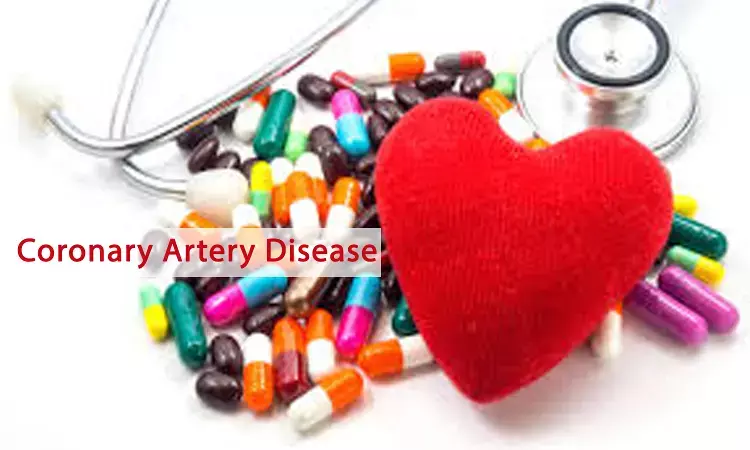- Home
- Medical news & Guidelines
- Anesthesiology
- Cardiology and CTVS
- Critical Care
- Dentistry
- Dermatology
- Diabetes and Endocrinology
- ENT
- Gastroenterology
- Medicine
- Nephrology
- Neurology
- Obstretics-Gynaecology
- Oncology
- Ophthalmology
- Orthopaedics
- Pediatrics-Neonatology
- Psychiatry
- Pulmonology
- Radiology
- Surgery
- Urology
- Laboratory Medicine
- Diet
- Nursing
- Paramedical
- Physiotherapy
- Health news
- Fact Check
- Bone Health Fact Check
- Brain Health Fact Check
- Cancer Related Fact Check
- Child Care Fact Check
- Dental and oral health fact check
- Diabetes and metabolic health fact check
- Diet and Nutrition Fact Check
- Eye and ENT Care Fact Check
- Fitness fact check
- Gut health fact check
- Heart health fact check
- Kidney health fact check
- Medical education fact check
- Men's health fact check
- Respiratory fact check
- Skin and hair care fact check
- Vaccine and Immunization fact check
- Women's health fact check
- AYUSH
- State News
- Andaman and Nicobar Islands
- Andhra Pradesh
- Arunachal Pradesh
- Assam
- Bihar
- Chandigarh
- Chattisgarh
- Dadra and Nagar Haveli
- Daman and Diu
- Delhi
- Goa
- Gujarat
- Haryana
- Himachal Pradesh
- Jammu & Kashmir
- Jharkhand
- Karnataka
- Kerala
- Ladakh
- Lakshadweep
- Madhya Pradesh
- Maharashtra
- Manipur
- Meghalaya
- Mizoram
- Nagaland
- Odisha
- Puducherry
- Punjab
- Rajasthan
- Sikkim
- Tamil Nadu
- Telangana
- Tripura
- Uttar Pradesh
- Uttrakhand
- West Bengal
- Medical Education
- Industry
Phytosterols increase the risk of coronary artery disease

Phytosterols are lipid compounds formed in plants that are ingested with food, for example nuts or vegetable oils. In some cases, these are artificially added to various foods such as yoghurt or margarine, as they can lower cholesterol and are thus perceived as having a positive effect on our health. On the other hand, phytosterols are similar to cholesterols and can themselves be deposited in vascular walls, which may lead to atherosclerosis. In atherosclerosis, deposits form in the walls of medium-sized and large arteries, obstructing and blocking the flow of blood. The relationship between phytosterols and coronary heart disease is therefore a contentious issue in medical research.
Scientists from the Faculty of Medicine, in cooperation with other European study groups, conducted a genetic association analysis of phytosterol concentrations in the blood of nearly 10,000 subjects. Using a method to determine the influence of variable risk factors on diseases by exploiting genetic factors, the team succeeded in inferring causal relationships between phytosterols, cholesterol and coronary heart disease. "It appears that there are both direct and indirect cholesterol-mediated negative causal effects of phytosterols on the risk of coronary heart disease. The study thus makes a significant contribution to a discussion that has been controversial for many years," said study leader Professor Markus Scholz from the Institute for Medical Informatics, Statistics and Epidemiology (IMISE) at Leipzig University, adding: "Although this does not yet allow an immediate conclusion regarding the addition of phytosterols to food, high phytosterol concentrations are a risk factor that should be taken into account."
The researchers identified a total of seven regions in the genome that are associated with phytosterol concentrations in the blood. Of these, five are new. By means of bioinformatic analyses, the team then derived plausible candidate genes, meaning genes with biological effects in sterol metabolism. "This greatly expands our understanding of the genetic regulation of phytosterol concentrations in the blood. These genes, or their products and functions, represent potential targets for future drug development," said Professor Scholz. The LIFE studies – LIFE-Adult and LIFE-Heart – as well as the so-called Sorbian study provided the majority of the case numbers from the Leipzig side, with 4114 blood samples. In addition, most phytosterol concentrations, 7042 in total, were measured at the Institute of Laboratory Medicine under the direction of Professor Uta Ceglarek. The biostatistical analyses and modelling were performed under the direction of Professor Scholz at the Institute for Medical Informatics, Statistics and Epidemiology.
https://www.nature.com/articles/s41467-021-27706-6
Hina Zahid Joined Medical Dialogue in 2017 with a passion to work as a Reporter. She coordinates with various national and international journals and association and covers all the stories related to Medical guidelines, Medical Journals, rare medical surgeries as well as all the updates in the medical field. Email: editorial@medicaldialogues.in. Contact no. 011-43720751
Dr Kamal Kant Kohli-MBBS, DTCD- a chest specialist with more than 30 years of practice and a flair for writing clinical articles, Dr Kamal Kant Kohli joined Medical Dialogues as a Chief Editor of Medical News. Besides writing articles, as an editor, he proofreads and verifies all the medical content published on Medical Dialogues including those coming from journals, studies,medical conferences,guidelines etc. Email: drkohli@medicaldialogues.in. Contact no. 011-43720751


